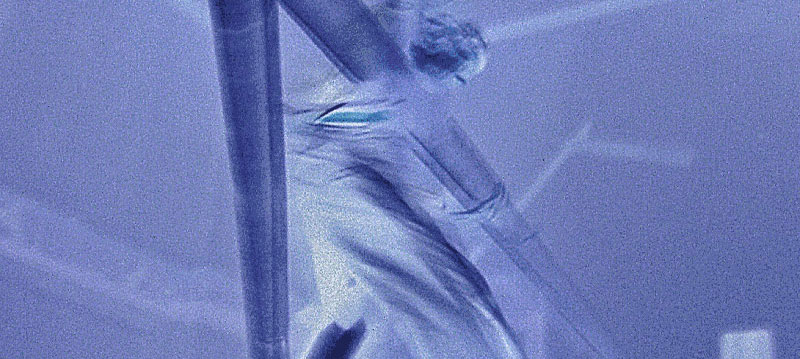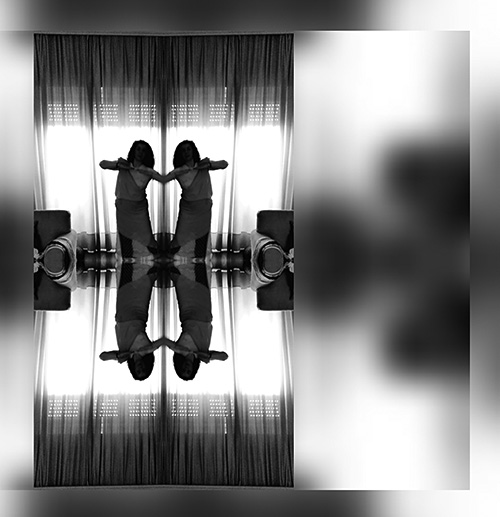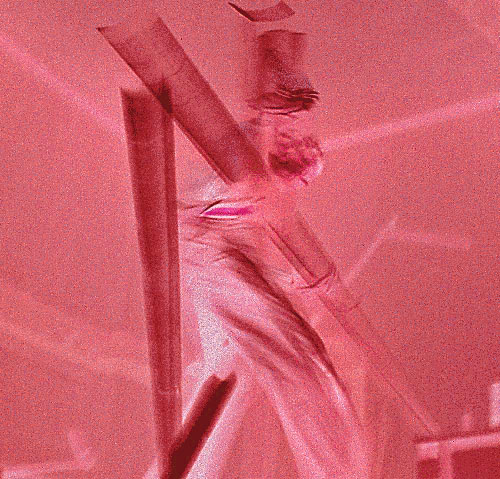MEDIA ARE FOR MANY CHOREOGRAPHERS A STANDARD ELEMENT OF THEIR PERFORMANCE
BODY, DANCE AND PERFORMANCE DURING THE COVID-19 PANDEMIC
By Natasha Hassiotis
 Photo: Chr. Ziegler
Photo: Chr. ZieglerTHE CRISIS OPPORTUNITY
When the financial crisis hit more than a decade ago, dance critics and historians immediately responded by trying to define and identify how this challenge would affect artists and their art—a rather difficult task as situating an individual within the historical frame of his/her era while perceiving it as objectively as possible is close to impossible.
Nonetheless, some interesting questions came under scrutiny. For example, were any changes bound to occur in the field of institutions or in the field of dance itself because of the financial crisis and consequent lack of funding? How would artists confine themselves and their inspiration within small spaces and very small scale spectacles, let alone realize it into a tangible spectacle, with the meagre financial means then available?
Is money related to the quality of a spectacle?
I would add: was the opulence of the 90s a necessary thing? And did it lead to any (quality-wise) unforgettable productions?
CUT DOWN & IMPROVISE!
When there's a shortage of money, logic and the survival instinct push toward the most obvious direction: stripping off the inessential and economizing. Therefore we saw collectives being initiated and an emphasis put on short, site-specific, or street/open-air performances, happenings, events.

Photo: Natasha Hassiotis
Techniques such as contact improvisation and release, that emphasize the informal, the low-key presence of the dancer participant, claim solidarity and an attitude toward the body that is tolerant, liberating and loose, offered consolation and helped to overcome the hostility and aggression that hovered over societies and artists alike by over-accentuating the need for mutual support and an interest in the weaker members of society. These techniques also helped rethink the urban landscape—an urban landscape that had become unrecognisable and depressing, with homeless people and the sad stories of the victims of the fall of vanity exhibited in the previous decades—along with the inner landscape of the performer.
WE ARE FORCED TO REFLECT AND REPLAN
It's only human nature to look to previous moments of crisis not only for educational purposes, but also for inspiration and ideas on how to handle adversity. Therefore in 2008 many looked back not just into past disasters, but also into utopian ideas, in the hope that "this time it might work." This is partly how the aforementioned choices—i.e., of collectives—may be interpreted. As soon as hope and a relative stability returned, escapism showed signs of having completed its life cycle. Then, just as everyone was about to catch up with life and art using gained experience as an asset for future expeditions, the COVID-19 pandemic became the new, more serious "drawback of human planning".
At the moment, no clear signs of a new style or genre in dance exist, as people believe the disease to be a short-term impediment. In collaboration with technology (the greatest enemy of escapism), dancers and performers managed to gain their pace (ironic) through the time of confinement—which seems not over yet.
On virtual meeting platforms, dancers continue to exercise on a daily basis, to teach and to choreograph. Famous artists have gone online on social media and shown their daily routine; dancers have continued to encourage colleagues, friends, and their audience on social media to gain strength and avoid depression through exercise.
THE BODY ADAPTS TO EXPERIMENTS
The body became "virtual"once more, bringing to mind the experiments carried out in the 90s when that new tool, the internet, sent performers experimenting with real time, different time zones, simultaneous dancing in different countries - the reality and corporeality and their limits.

Photo: Chr. Ziegler
Via the state-of-the-art technology of the time, performers mixed rationality and materialism with the "vanishing" of the body, its transcendental potential and the phenomenological point of view of experiments with the challenge of time and space as we know them. Media, computers, became for many choreographers a standard element of their performances. The spectators often saw the "dialogue" of the performer on stage, with his/her prerecorded image or the projection of the body into an imaginary landscape via multimedia work.
ANGST FUELS CREATIVITY AND CONFINEMENT REDEFINES SPACE
It's rather early to say what this new crisis will generate in terms of inspiration for new ways of making dances. Serious questions arise from the pandemic and may help trigger new paths in our thinking. How does the body react in long-term confinement? How does the threat of a pandemic influence the body itself, and how does it cope with stress? How will the lonely body be treated? How do we evade the trap of mourning that constant images of death and danger in the media and in the news magnify? How do we perceive our culture after the severe blow brought about by the pandemic? How do we furthermore perceive the sick body and the frailty of life? As generations who have lived in relative luxury and peace, how quickly and how exactly shall we respond to consecutive crises? In other words, what are the tools and the reflexes that lead to personal, social, and artistic maturity? Will there be another fatalist "lost generation," as in the 20s?
Fear and anxiety has been turned into art by many artists, from Holbein to Munch and many others. Colour, shade, perspective (or the lack of it), help communicate the feeling of anger and despair to the viewer. How can an art such as dance that is so direct with the presence of the body, so overwhelmingly close to the viewer, be turned into a distant activity, a spectacle that one watches on a screen? Does distance change the perspective as drastically as the discovery of perspective itself changed painting in the Renaissance? Is confinement a confining situation or an inspiring opportunity?

Great Choreographer's Interviews
Dance is a social activity, but it also exists as solo performance. Dancers know that any object may serve the purpose of an exercise instrument, that space is a relative term and a challenge. From Trisha Brown's exploration of the walls and roofs of the buildings of New York to Martha Graham's spiraling of her Ariadne around the horns of a mythical bull to Mary Wigman's floor ritual of the Witch, to Steve Paxton's solitary "Goldberg Variations" or the post-industrial gloomy abstractions in William Forsythe's work of the late 80s and 90s—just to name a few of the many existing examples—dancers and choreographers have shown that space and everything related to it are malleable, relative, adjustable entities, and challenges to be conquered.
Natasha Hassiotis is a dance critic, choreographer and art historian. Her book "Great Choreographers Interviews" is available online.
LINKS: Great Choreographers Interviews on Google Books








